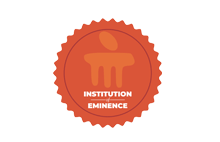Chemical, elemental, morphological and toxicological characteristics of traditional Indian Siddha formulation: Kasthuri Karuppu
Document Type
Article
Publication Title
Advances in Traditional Medicine
Abstract
The chemical, elemental, morphological and toxicological characteristics of organometallic formulation (Kasthuri Karuppu) were assessed using UV-spectrophotometer, X-ray photoelectron spectroscopy, Fourier transform infrared spectroscopy, ICP-OES, Energy dispersive X-ray, XRD and Zeta potential. The physical properties such as size (10–80 nm), surface area (3.1 m2/g), surface charge (-36mV), and bandgap energy (3.6 eV) were correlated with reactivity. Based on the elemental distribution of Hg, As and S, the proportion favours HgS that is less toxic and reactive. There were no toxic effects of the tested formulation at concentration 60 µg/mL against normal and cancer cells (observed during 24 h). However, the increase in time duration (72 h) had lethal effects in both the cells. The developmental toxicity of the organometallic formulation was assessed in Zebrafish embryos. The safe dosage was found to be 100 µg/mL. The toxicity of the formulation in vitro and in vivo is based on the exposure time and dosage.
DOI
10.1007/s13596-024-00790-x
Publication Date
1-1-2024
Recommended Citation
Kannan, N.; NV, Anil Kumar; and Balaji, S., "Chemical, elemental, morphological and toxicological characteristics of traditional Indian Siddha formulation: Kasthuri Karuppu" (2024). Open Access archive. 10720.
https://impressions.manipal.edu/open-access-archive/10720


